HubSpot's 2025 State of Blogging Report [Data from 500+ Marketers]
Full disclosure, I think my team and I are a little embarrassed. Believe it or not, blogging is kind of our main thing here at The HubSpot BLOG — so the fact that it‘s taken over a decade for us to put together our first-ever report on the state of blogging isn’t the best look.
But hey! As that Chinese proverb says, “The best time to plant a tree is 20 years ago. The second best time is right now.” That’s why we surveyed over 500 marketers across various industries and company scales to get a pulse on the current state and future fate of blogging.
![Download Now: Free State of Marketing Report [Updated for 2025]](https://no-cache.hubspot.com/cta/default/53/b0f73a5e-16e4-41fd-9511-8564efc560a7.png)
We covered all of the big bases, including:
- Do companies still publish blog content?
- Why do companies blog?
- What kind of content are companies publishing?
- Where does blog traffic come from?
- How is AI transforming the practice?
- How are blogs adjusting in the era of E-E-A-T?
- Where is blogging headed?
- So much more!
Check it out! Yeah!
Why do companies blog?
Blogging is a pretty versatile practice. It can help cover a lot of bases on the marketing front, but our research indicates that most businesses that leverage it are doing it to garner attention. Our study found that:
- 66% of blog-maintaining businesses publish content for brand awareness.
- 53% do it for customer engagement.
- 49% do it for lead generation.
- 34% do it for SEO-related purposes.
- 26% do it to project thought leadership.
Naturally, those goals align with the KPIs most of those companies use to gauge their content’s success. We found that more brand awareness-oriented metrics were the most popular with businesses that publish blog content. According to our research:
- 54% of blog-maintaining businesses use pageviews to measure their blogs’ success.
- 53% use social shares.
- 46% use conversion rate.
- 45% use time on page.
- 22% use backlinks.
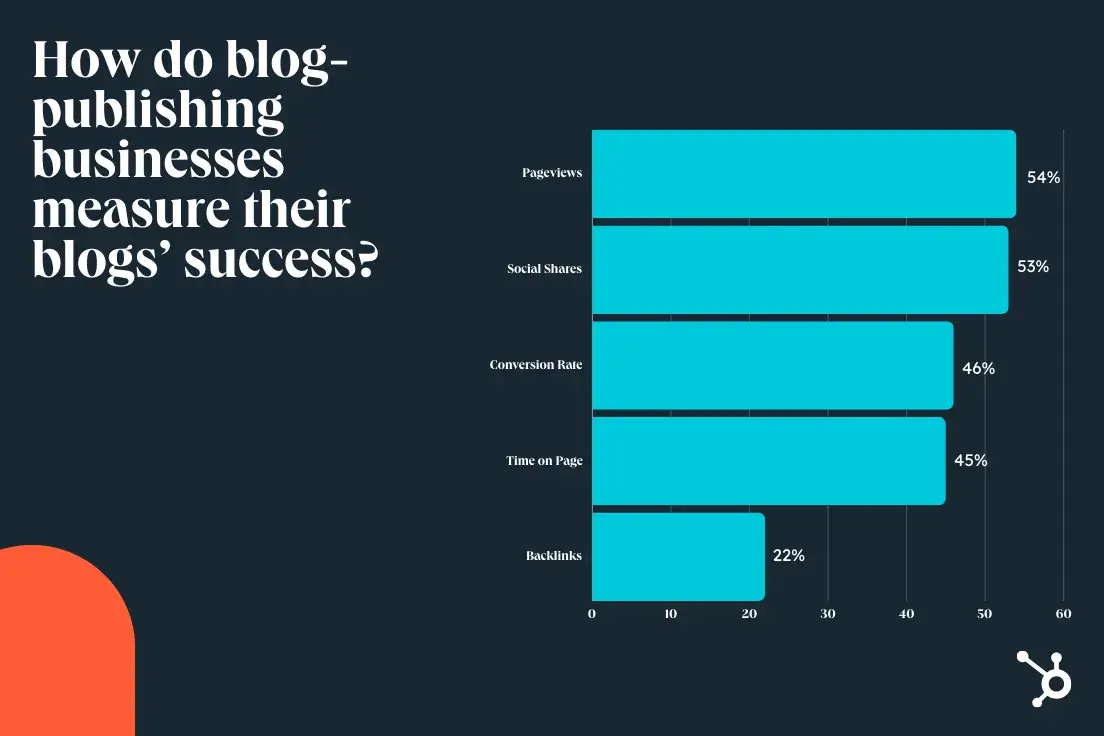
Ultimately, blog content is — first and foremost — a promotional play for most businesses. While some use it for hard conversions, most blog-producing businesses are just looking for another avenue to get their brand in front of potential customers. While those goals are generally consistent, there are a lot of ways to achieve them.
“Blog content” is a pretty broad catch-all that covers several content formats — and the marketers we surveyed saw value in a wide range of them.
Where does blog traffic come from?
Getting engaged eyes on your content is every bit as tricky as it is essential — and in a landscape facing seismic shifts prompted by factors like volatility in organic search and the popularization of short-form content, maintaining a diverse range of distribution channels is transitioning from nice-to-have to need-to-have for bloggers.
The marketers we surveyed reflected that sentiment. Our study found that:
- 83% of businesses that maintain blogs distribute their content through social media.
- 47% leverage email newsletters.
- 47% leverage paid ads.
- 36% leverage organic search.
- 33% leverage influencers.
- 23% leverage paid search.
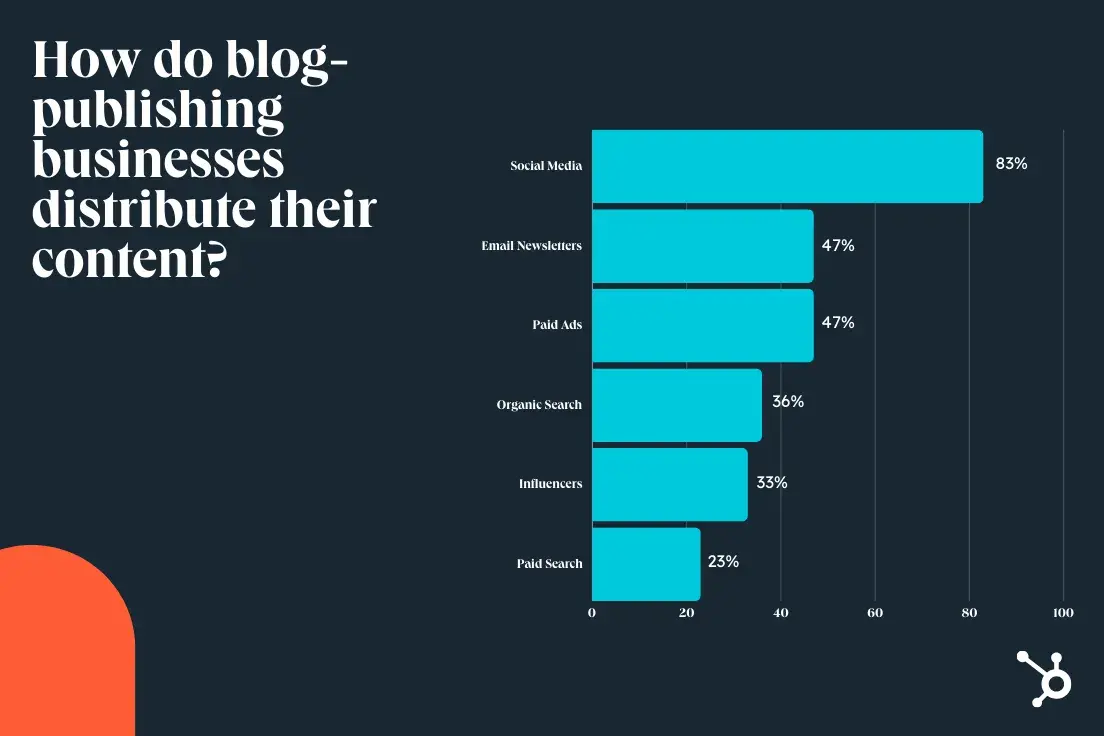
Our research also indicates that businesses with blogs are generally split on sourcing traffic organically versus through paid avenues. Our survey found that:
- 38% of businesses with blogs mostly sourced traffic organically.
- 21% sourced it primarily through paid avenues.
- 36% sourced it with a mostly equal combination of the two.
While we’re on the subject of nice-to-haves becoming need-to-haves, let‘s take a look at how AI is playing into businesses’ blog strategies.
How are blogs E-E-A-T-ifying?
Several blogs have found themselves scrambling to adjust to these new standards, and our respondents took a range of approaches to get there.
One key factor in appeasing the E-E-A-T gods is establishing author credibility, and respondents whose companies publish blog content went about that a few ways. Our research found that:
- 43% of blog-producing businesses established author expertise by referencing published works and citations.
- 42% used author bios with credentials.
- 40% included links to professional profiles.
- 27% referenced industry certifications.
- 8% were unsure.
Incorporating research and data is also a big help when E-E-A-T-ifying blog content — making it one of the more popular approaches our respondents took. According to our study:
- 8% of our respondents featured data in 0-20% of their blog content.
- 23% featured it in 21-40% of their content.
- 28% featured it in 41-60% of their content.
- 26% featured it in 61-80% of their content
- 13% featured it in 81-100% of their content.
- 3% were unsure.
However, loading your content with data might not be enough to cut it on SERPs nowadays. Again, the additional “E” in E-E-A-T stands for “experience” — meaning firsthand insight is pretty mission-critical when trying to make headway in the current search landscape. According to our research:
- 45% of blog-producing businesses project firsthand experience by highlighting personal experiences from team members.
- 36% source original quotes from subject matter experts.
- 35% reference case studies from actual clients.
- 33% feature expert interviews.
- 25% share product testing results.
- 10% don’t specifically document experience.
- 6% were unsure.
Ultimately, E-E-A-T represents what might be the most monumental shift in organic search ever, so naturally, it‘s fundamentally shaped several blogs’ content development process. According to our research, these are the primary ways our respondents have adapted:
- 39% increased citation of primary sources.
- 34% implemented expert review processes.
- 36% added original research and data.
- 31% implemented enhanced fact-checking procedures.
- 20% added author credentials and bios.
- 12% didn’t implement any significant changes.
- 7% were unsure.
So with all of the shifting tides, turmoil, and uncertainty that‘s been shaping the landscape of content marketing as of late, there’s really only one question to ask — where is blogging headed?
Well, despite all of the recent headwinds and “all-over-the-boardness” that a lot of my fellow content strategists can speak to, most of the marketers we surveyed were optimistic about the future of blogging. Our research found that: Still, content marketing is ever-evolving, and businesses can‘t lean strictly on their blogs to drive engagement going forward — and most of our respondents recognize that. That’s why they’re also investing in other content formats. According to our study: Ultimately, if our research is any indication, blogging is far from obsolete halfway through the 2020s. A lot of changes have rocked the practice in recent years — the popularization of AI and the introduction of E-E-A-T criteria being two of the most transformative — but bloggers appear to be adapting. Blogging is still one of the most effective vehicles marketing orgs have at their disposal for facilitating key goals like lead generation and generating brand awareness. And the fact that the marketers we surveyed still see enough value in the practice to keep investing in it speaks to how versatile and productive it can be. So what’s the state of blogging? In a word — solid. It’s ever-changing and fundamentally different than it used to be … but still solid.Where is blogging headed?
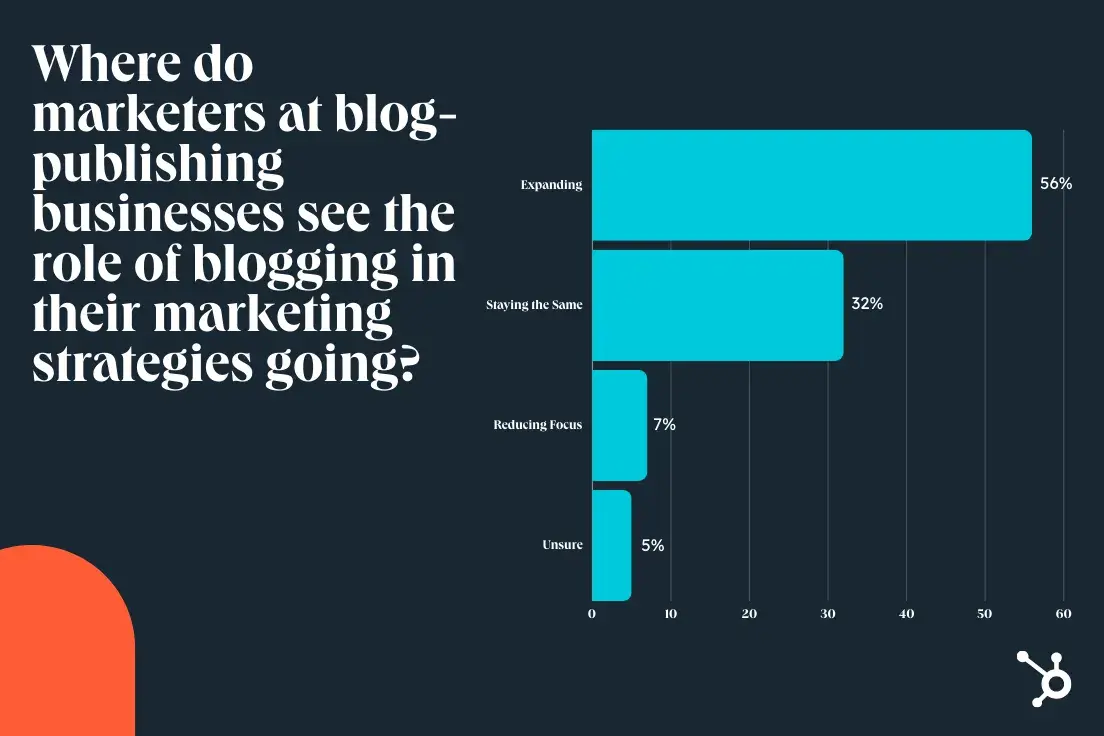
So what is the state of blogging in 2025?
“Behind the Blog”: A Look at the Ins and Outs of The HubSpot Blog Team
![]()
from Digital Marketing – Techyrack Hub https://www.newstrenders.com/2025/01/27/hubspots-2025-state-of-blogging-report-data-from-500-marketers/
via IFTTT
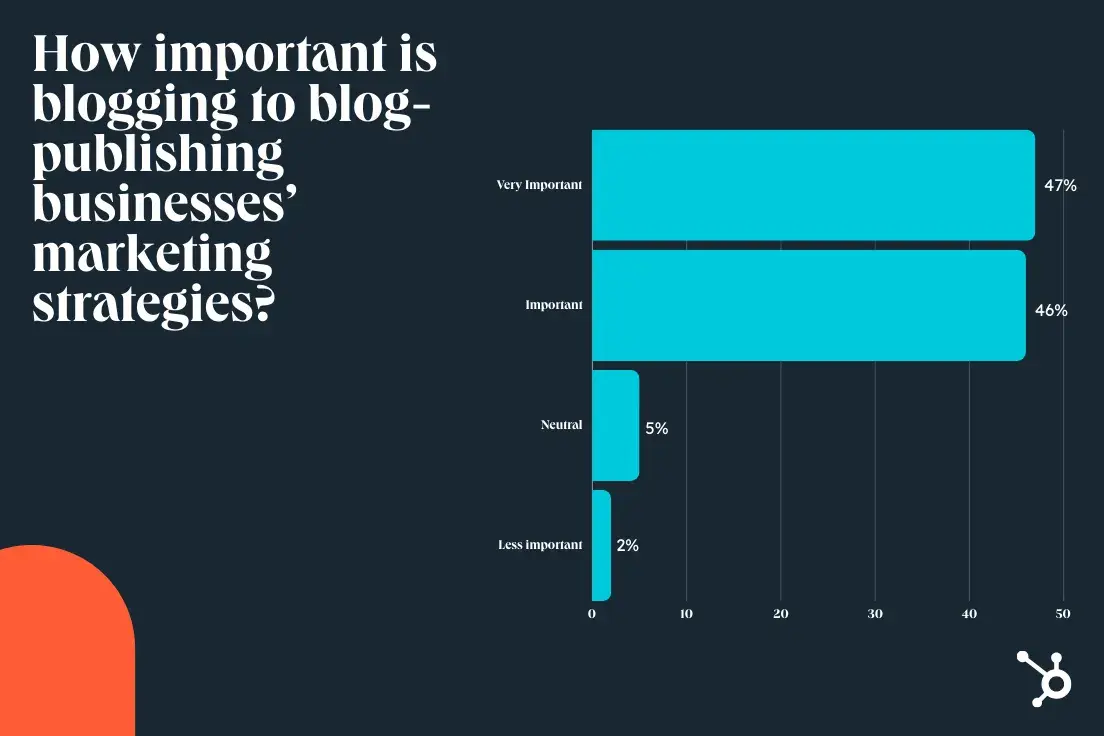
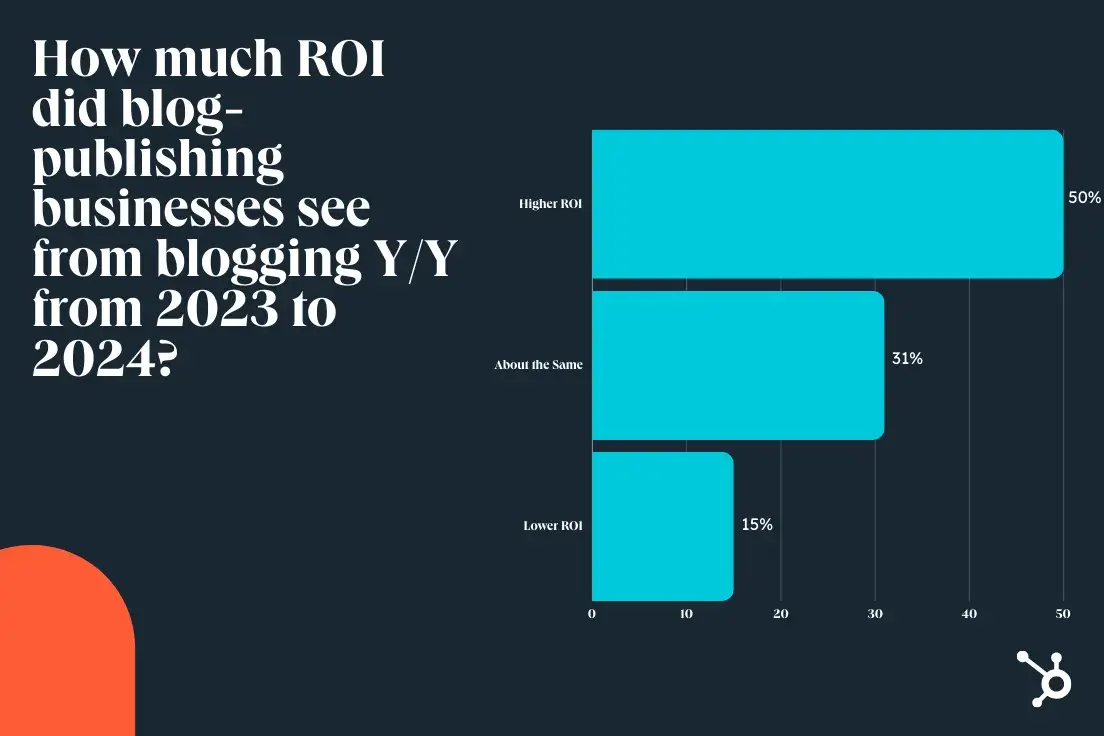
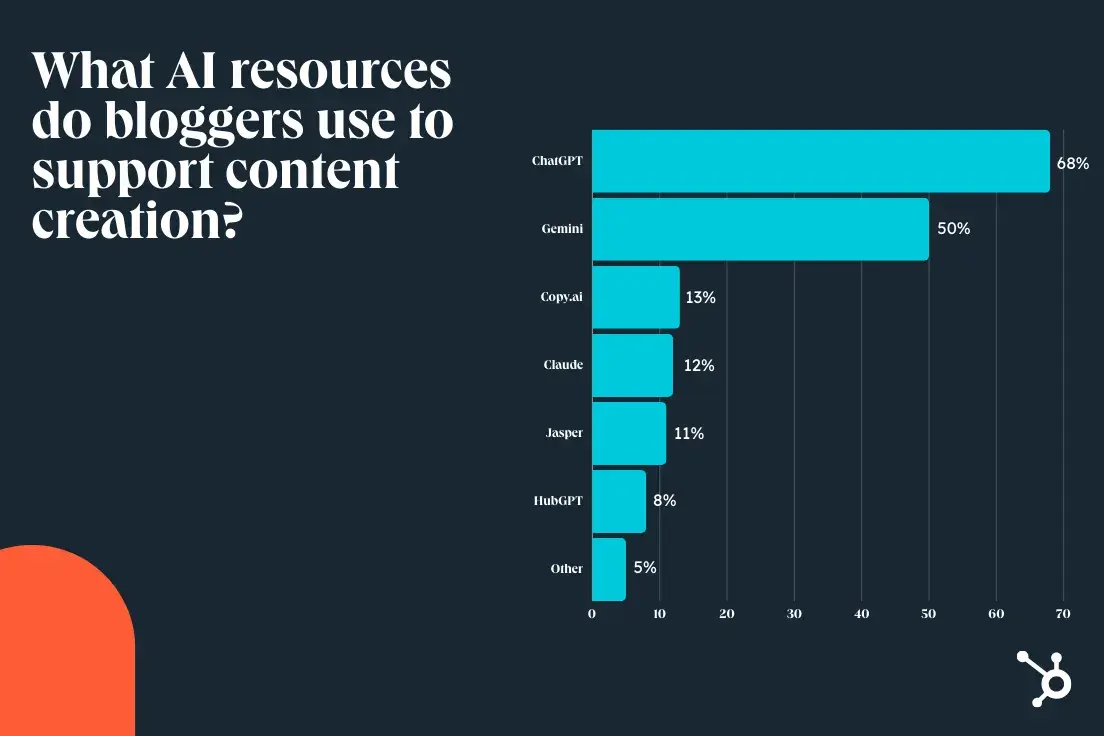
Comments
Post a Comment